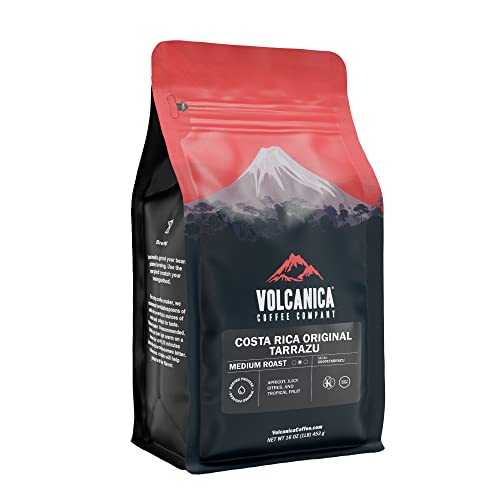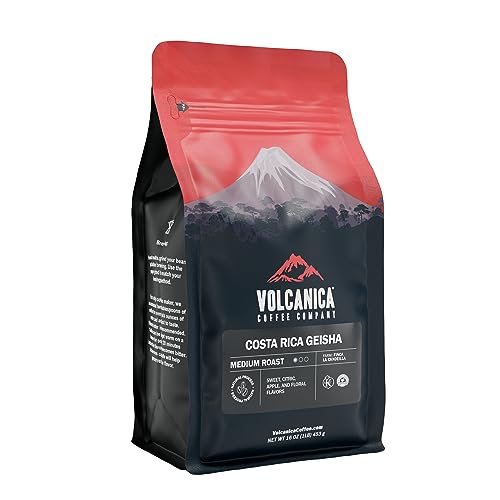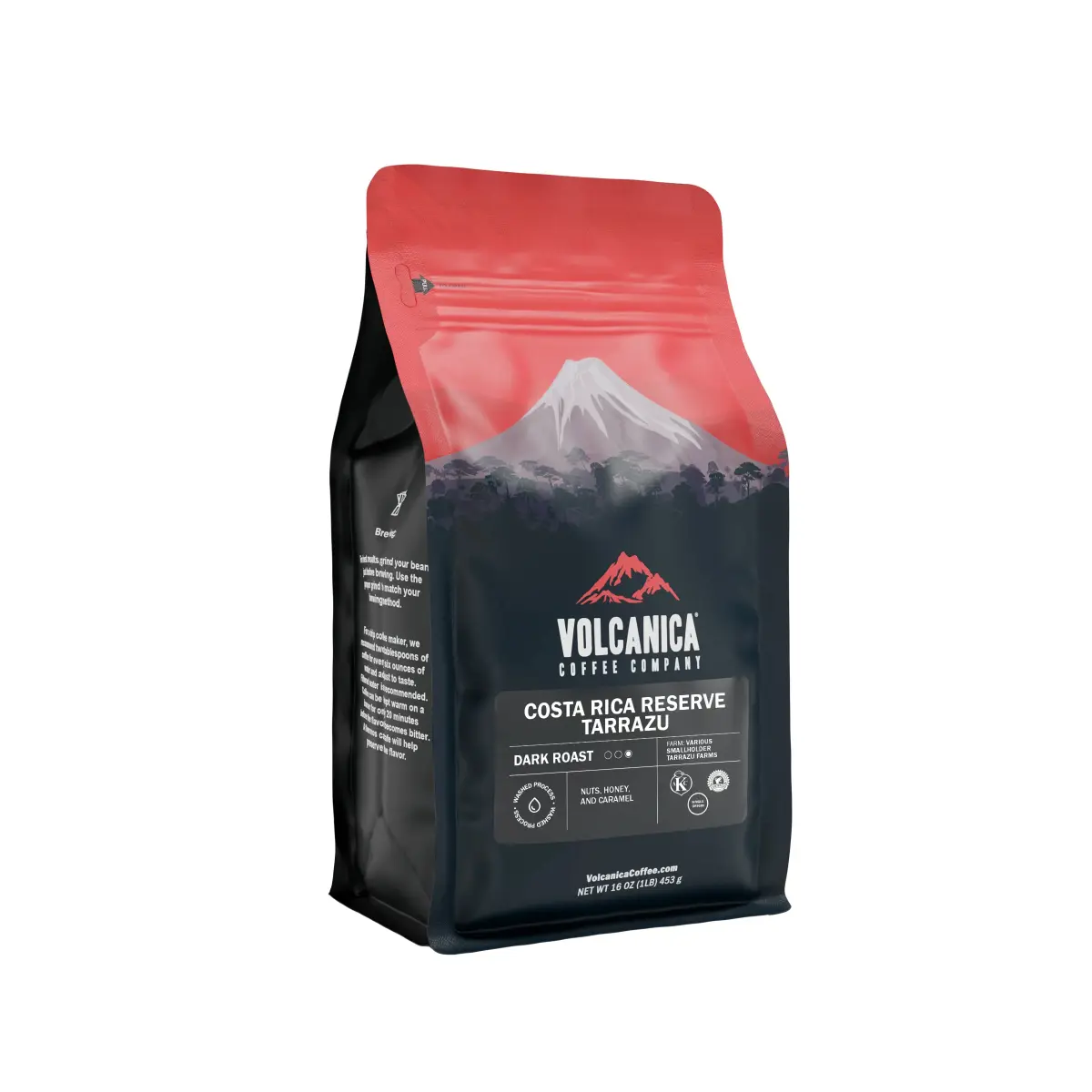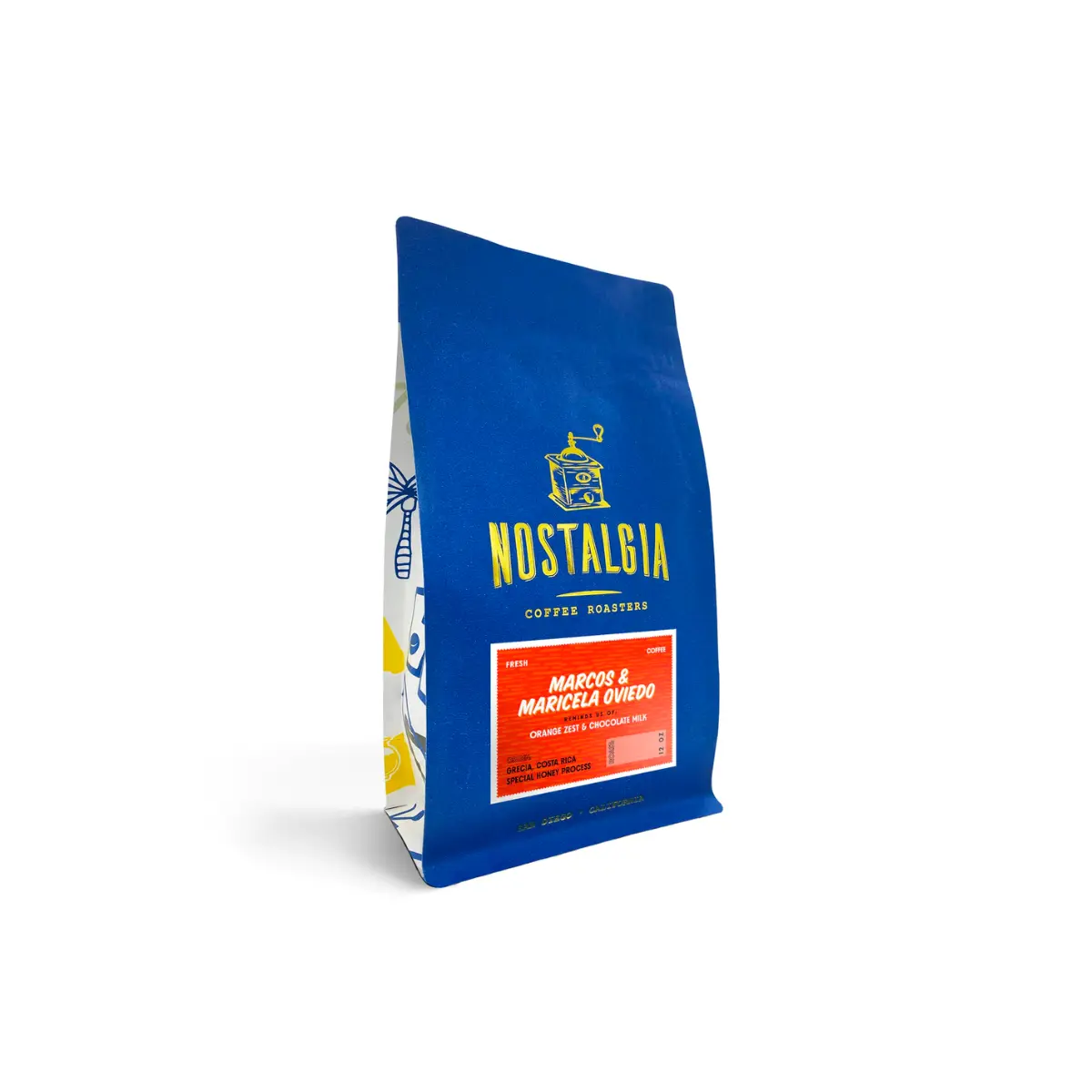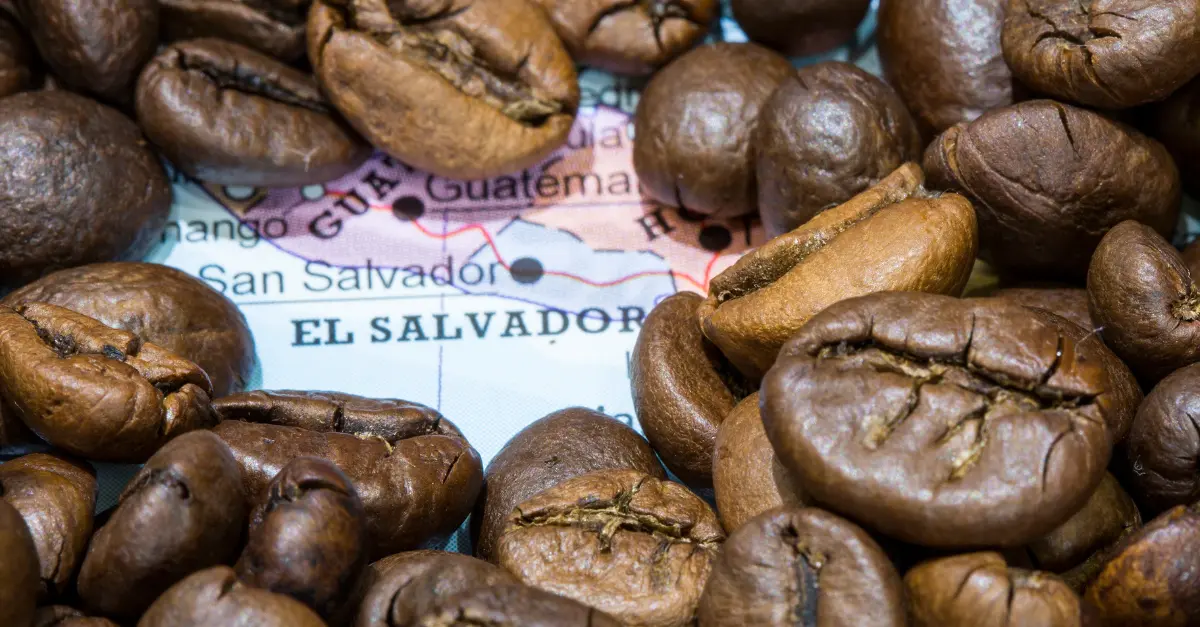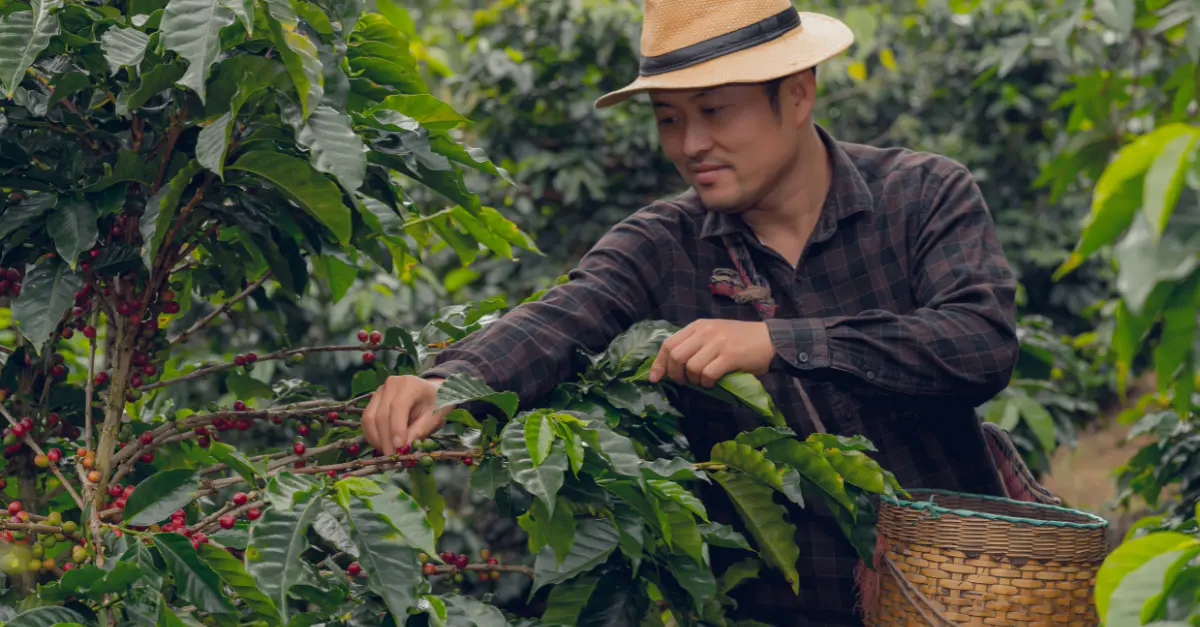Did you know that some of the world’s best coffee on the global market is Costa Rica coffee? Costa Rican coffee is known for its delicate and decadent flavors, fine body, and intoxicating aromas. Yet, the country only accounts for less than 1% of the global coffee supply due to its relatively smaller land size.
Coupled with warm tropical climates, volcanic-rich soil, mountainous landscapes, and heavy rainfall, the country produces a myriad of premium-quality coffee. In fact, to keep up with its focus on producing the best quality coffee, the Costa Rican government outlawed the production of robusta coffee beans years ago. This has left the arabica bean variety as the main coffee variety growing in the country.
Nonetheless, there’s still a vast range of coffee bean options from different regions, farms, and lots to explore. So, if you are a genuine coffee lover, this is your sign to learn more and discover Costa Rica’s magical beans.
Criteria for Selection
Flavor Profile
Costa Rican coffee is renowned for its bright acidity, medium body, and deeply aromatic flavors that often have fruity and nutty notes. The unique volcanic soil and climate contribute to these distinct characteristics.
Sustainability
Costa Rica has a strong focus on sustainable farming practices. Many farms are Rainforest Alliance certified, ensuring that the coffee is grown in a way that is beneficial to the environment.
Quality Assurance
Costa Rican coffee is often grown at high altitudes, which contributes to a denser, higher-quality bean. Additionally, Costa Rica has stringent quality control measures, including the “Strictly Hard Bean” (SHB) classification, ensuring that only the best beans make it to market.
Traceability
The traceability of Costa Rican coffee is excellent, allowing us to know exactly where our beans are coming from. This is crucial for ensuring quality and ethical practices.
Customer Feedback
We also considered the preferences of our customer base through surveys and taste tests to ensure that the selected beans would be well-received.
Featured Products
Costa Rica Counter Culture Coffee Fast Forward
⭐ 4.7/5 • 💰 ~$12
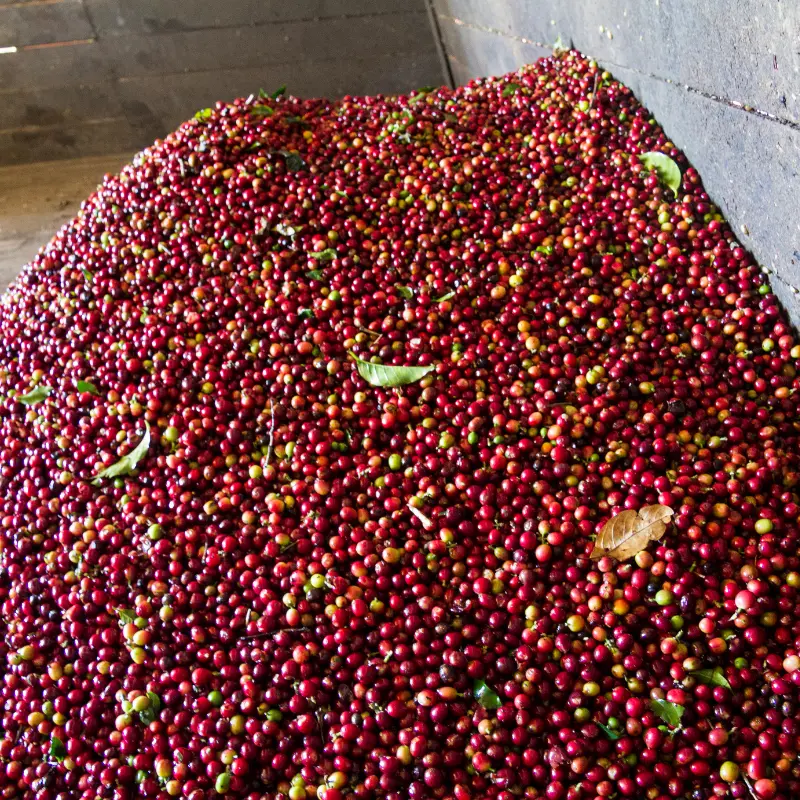
An organic, light roast, whole bean coffee that is sustainably farmed and kosher certified. Provides a flavorful, fresh experience.
Pros:
- Organic and sustainably farmed
- Kosher certified
- Packaged as whole beans for freshness
- Smooth, tasty and aromatic
Costa Rica Tarrazu Original Coffee
⭐ 4.2/5 • 💰 ~$20
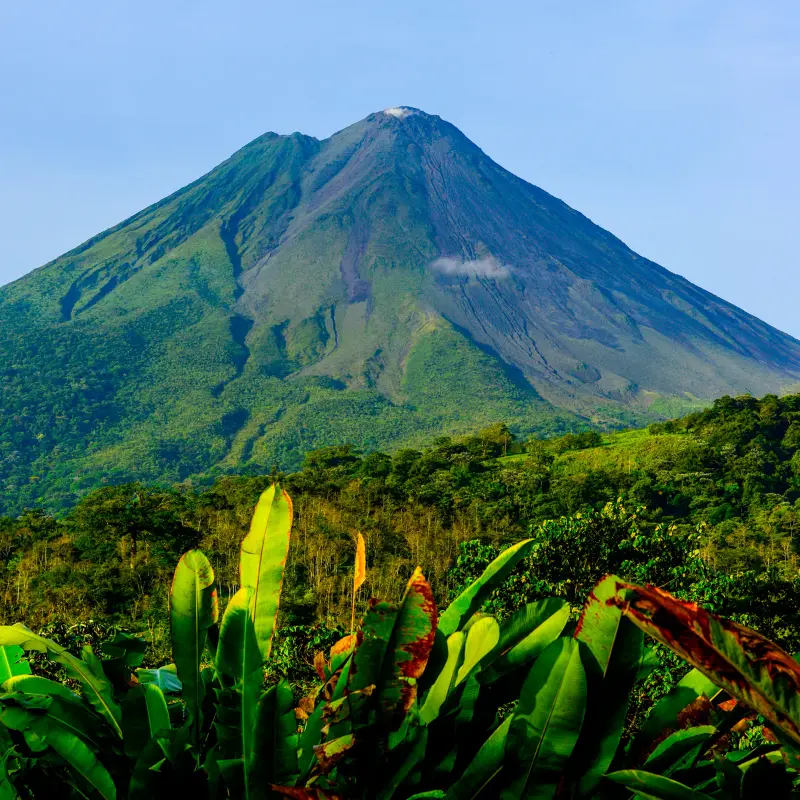
Premium medium roast coffee from Costa Rica. Freshly roasted and Fair Trade certified.
Pros:
- Sourced from Costa Rica, known for high-quality coffee production
- Medium roast provides a perfect balance of flavor
- Fair Trade certification ensures fair practices
- Freshly roasted for robust flavor and aroma
Volcanica - Geisha Coffee Costa Rica
⭐ 4.3/5 • 💰 ~$52
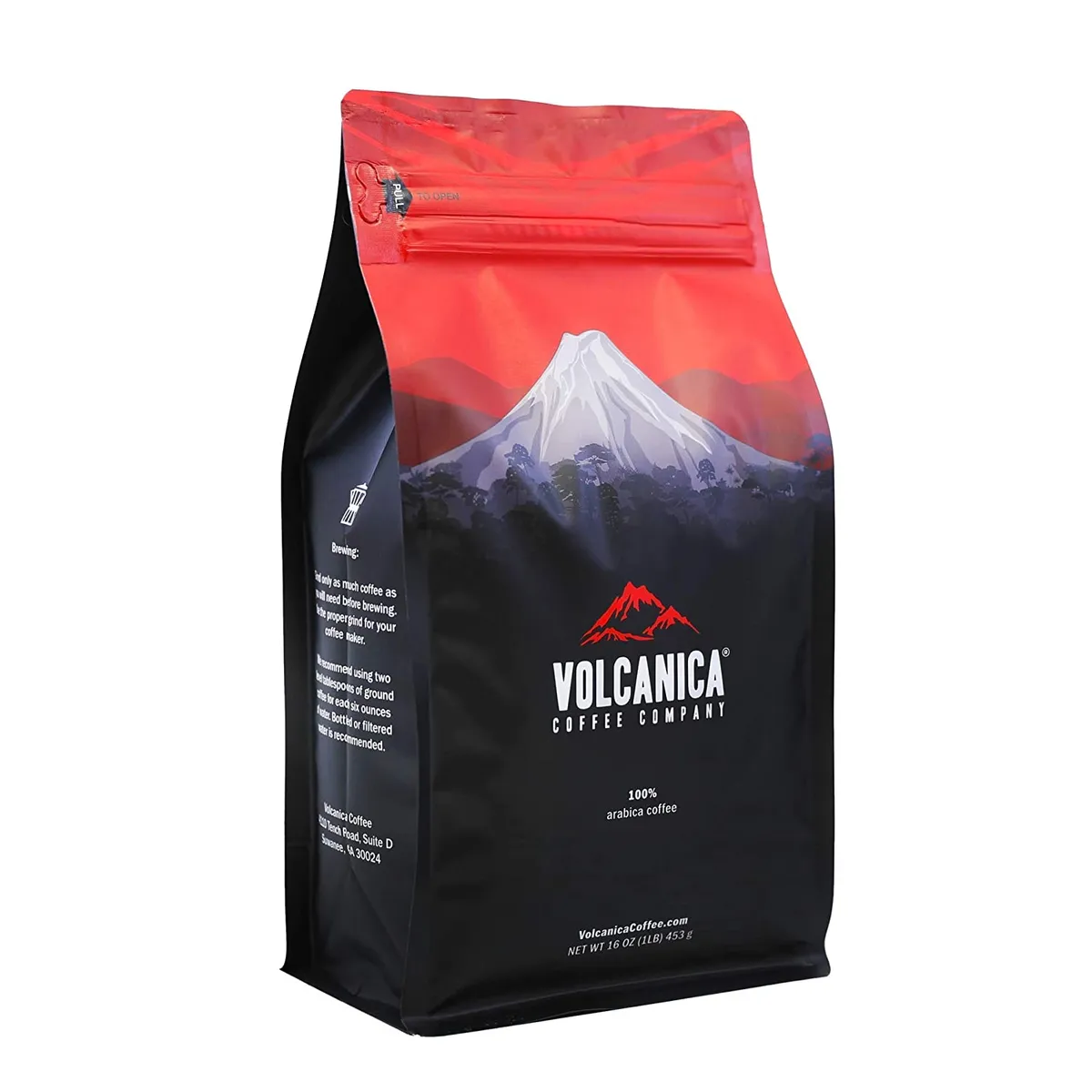
Geisha Coffee from Costa Rica, fresh roasted, low caffeine content. 100% Customer Satisfaction Guaranteed.
Key Features:
- 100% Pure Geisha Coffee from Costa Rica
- Rich chocolate notes
- Medium roasted whole beans
- 30% less caffeine than other coffees
Pros:
- Highly prized varietal
- Gentle acidity
- Medium body
- Silky mouthfeel
- Long, lingering finish
- Fresh roasted
- Immediately packed and sealed to assure freshness
- 100% Customer Satisfaction Guaranteed.
Costa Rican Dark Roast Coffee - Reserve
⭐ 4.4/5 • 💰 ~$19
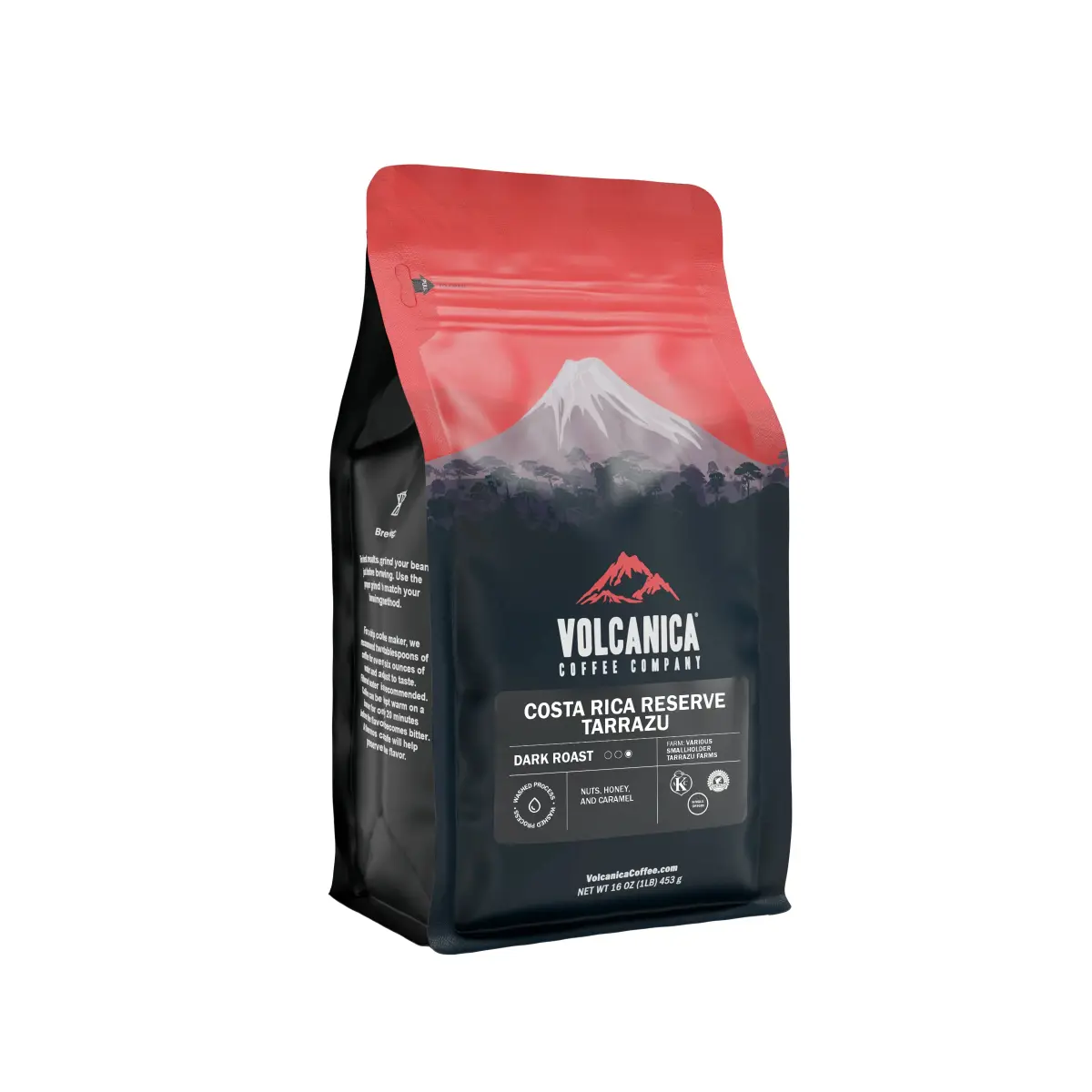
Experience the excellence of Costa Rican Dark Roast Coffee - Reserve, sourced from the prestigious coffee-growing region of Tarrazu. Renowned as one of the finest coffees globally, Costa Rican Coffee captivates with its light, clean flavor profile and captivating aroma. Expertly roasted to a full roast color, the natural oils shimmer on the surface, showcasing the peak expression of this exceptional blend. Notably, this coffee is rated as low acid, offering a smoother and more gentle experience on the palate. Delight in the distinct qualities of Costa Rican Dark Roast Coffee - Reserve, where quality and flavor converge in every sip.
Pros:
- Exotic and rare coffee origins
- High-quality beans
- Offers a wide range of roast profiles
- Rain Forest Alliance Certified
Costa Rica Marcos and Maricela Oviedo
⭐ 4.9/5 • 💰 ~$22
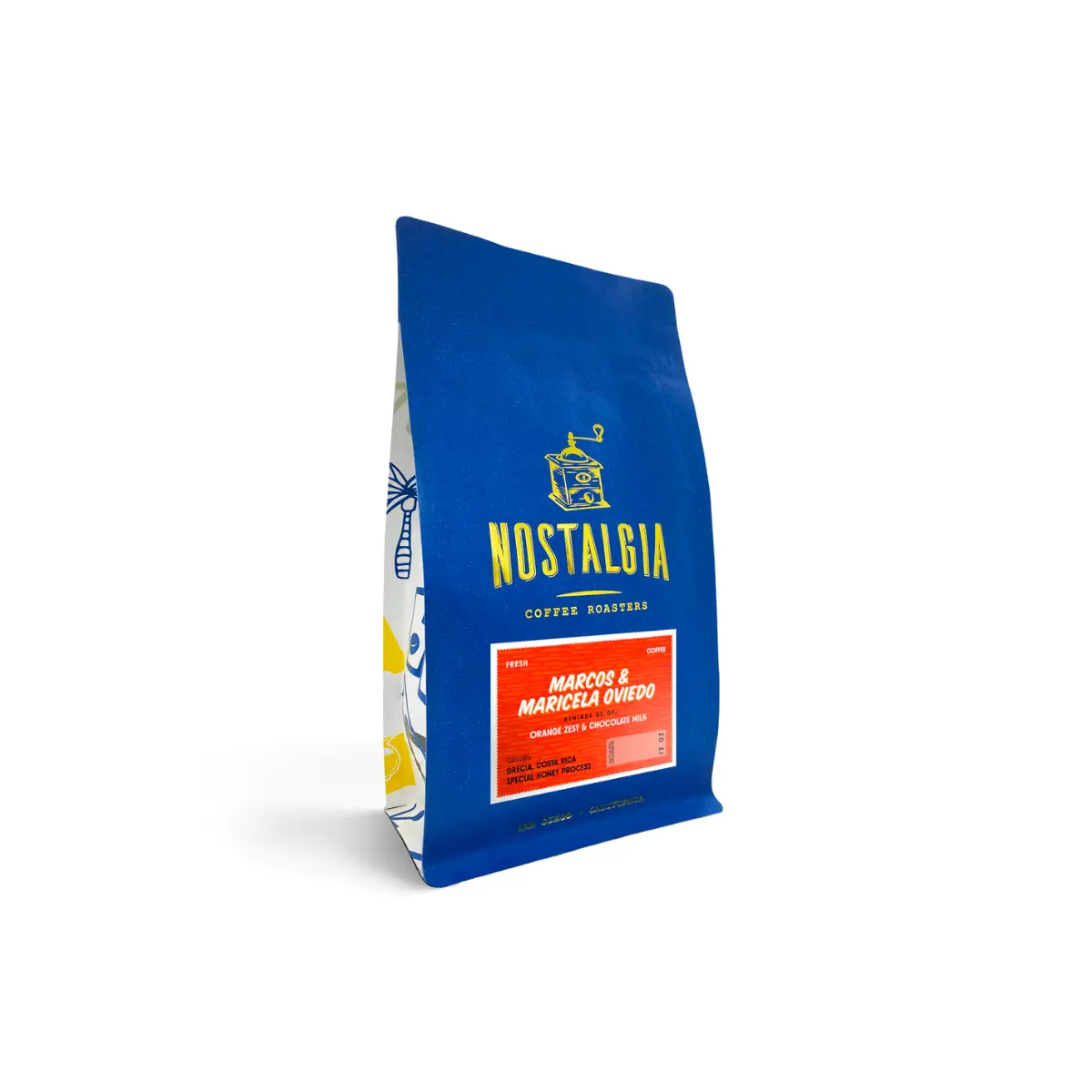
This coffee is undeniably delightful. World-class coffee growers, ethically exceptional coffee millers, and award-winning roasters come together to continually innovate and improve Nostalgia Coffee beans.
Pros:
- Smooth and comforting taste
- Preservation of traditional brewing methods
- Mellow and balanced flavor
Costa Rican Coffee Origins
Coffee has been growing in Costa Rica since the late 18th Century. The plant was introduced to the country by European settlers from Spain. The introduction of coffee saw a steady improvement in the country.
Before the introduction of coffee, Costa Rica was essentially built on a village economy extracted by a few city-based elites that formed part of the colonial regime. However, the introduction of coffee saw a massive change as the country moved towards mass production for large-scale export.
By the early 18th century, the government moved to commercialize the crop by providing farmers with coffee plantations. This decision significantly impacted the country’s position in the coffee world, making it the first Central American country to enjoy a fully developed coffee industry.
As the country continued to grow its profits, the country enjoyed infrastructural development. This, in turn, increased the production in the country by the mid-1800s. In fact, during this time, coffee was the number one export of the country, surpassing crops, such as tobacco, sugar, and cacao.
As Costa Rica continued to prove its superior coffee quality, it received immense support from its major customer base. England was one of the biggest recipients of Costa Rican coffee by the mid-1800s. As the country helped finance the Costa Rican coffee market. This was done through the establishment of the Anglo-Costa Rican Bank, and even more financing was available to grow the industry further.
With the increasing revenue from coffee exports, the country was able to send younger people to study in Europe and improve the inter-regional railway system that linked the country to the Atlantic coast. It is safe to say that coffee has played a significant role in Costa Rican history and development.
Unfortunately, the price fluctuations and eventual plummeting during the 20th-century financial crisis that affected Brazil also affected the Costa Rican economy. Nonetheless, the country managed to spring back.
Over the years, the Costa Rican government has continued to commit to and support the coffee market to ensure the best quality coffee is produced. In fact, the government passed a law in 1989 aimed at maintaining the highest quality coffee production by banning the cultivation of robusta coffee beans. So, today, Arabica coffee beans are the sole varieties produced in the country.
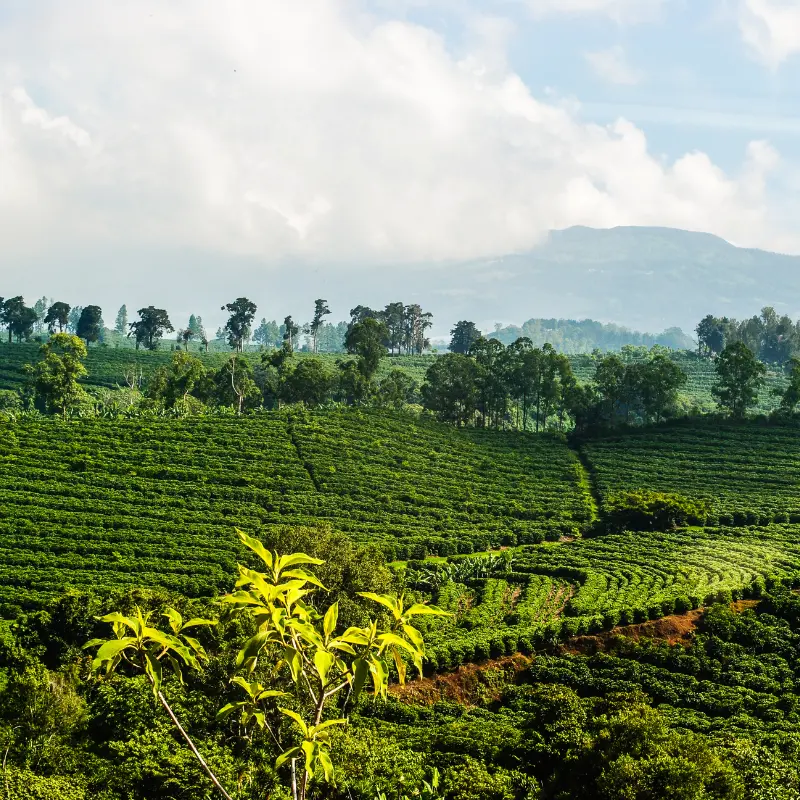
Costa Rican Coffee Today
As with most places across the world, the modern era saw an urbanization of some areas in Costa Rica, particularly, the greater metropolitan area of its Capital, San Jose. This, in turn, significantly reduced coffee production in the area. Similarly, in other parts of the country, low-income farmers and plantation owners have been forced to sell their land to larger corporations.
But, it is not all gloom in the Costa Rican coffee industry. The country has remained committed to the quality of coffee production. Through this, you will even find revolutionary coffee-producing techniques. Among the most impressive ones is the country’s unique coffee processing style, known as honeyed coffee.
The award-winning style was popularized in 2006 by award-winning coffee producer, Juan Ramon Alvarado. Instead of traditional fermentation and washing, the honeyed process uses a de-mucilage machine to remove the skin and pulp. However, the machine retains some of the bean’s mucilage. This, in turn, gives the coffee an improved flavor profile with more berries-like notes and pulpy characteristics.

Costa Rica Coffee Facts
-
Costa Rica accounts for less than 1% of the total global coffee production due to its smaller land size
-
Costa Rica is the 8th largest coffee producer in Latin America
-
Costa Rica is the 15th largest coffee producer globally
-
Coffee is the 3rd largest export from Costa Rica
-
Costa Rican coffee is grown in 8 key regions which boast 8 different Arabica varietals
-
Tarrazu is the most popular coffee-producing region
-
Coffee grows in altitudes of 1,640 feet (500m) to 6,230 feet (1,900m**).**
-
Nearly 90% of coffee in Costa Rica is farmed in less than 5 hectare farms (total of 50,000 farms)
-
Coffee farms and plantation estates cover over 193, 205 hectares (3%) of Costa Rican land
-
Coffee harvest season is between April and September
-
An estimated 1.365 million bags of coffee (60kg bags) are expected to be produced in the 2023/23 calendar
-
The Costa Rican coffee industry employs over 30% of the country’s labor force (about 43,000 farmers)
-
Costa Rica only produces Arabica coffee – Robusta Coffee production has been outlawed!
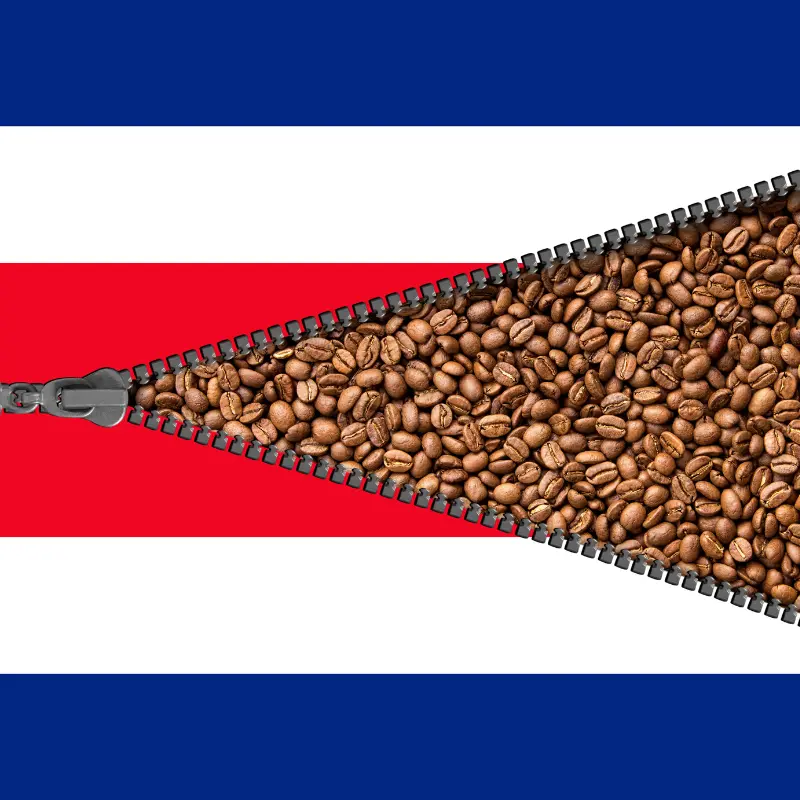
What Type of Coffee Grows in Costa Rica
Costa Rican coffee farmers exclusively grow the arabica bean type. However, you can find a variety of arabica bean varieties. There are up to 8 common varietals farmed across the country. Arabica coffee varietals from Costa Rica include Typica, Caturra, Catuai, Bourbon, Geisha, and Villalobos.
Caturra and Catuai are the most commonly grown varietals in Costa Rica. Other varietals are grown in smaller quantities.Some farms also grow the hybrid Villa sarchi varietal derived from crossing Caturra and Bourbon.
Another common cross varietal is the Sarchimor, derived from a cross of the Costa Rican Villa sarchi hybrid and Timor varietal (a hybrid of robusta and arabica). This hybrid varietal is favored for its impressive resistance to the common leaf rust and stem borer diseases.
Costa Rica Coffee Growing Regions
Most coffee from Costa Rica comes from small to medium-sized farms. While there have been issues of low-income farmers relenting to bigger building corporations, fortunately, this hasn’t significantly affected overall land ownership.
Up to 90% of the coffee farming land in Costa Rica is owned by these small to medium-sized farmers. This also makes it a lot easier for the coffee to be traceable. Most Costa Rican coffee can be traced to a farm or cooperative.
Costa Rica has 8 key coffee-growing regions. The country markets coffee through the regional names it is grown in. Since the country is small, you can easily draw a line to connect most of these regions on a map. Nonetheless, even coffee coming from the same region can still be unique to the other.
Coffee in Costa Rica is grown at altitudes of 3,900 feet (1,200m) in lowlands and 6,230 feet (1,900m) in highlands in temperatures ranging between 64 °F (18°C) and 79 °F(26°C). As always, higher altitude growing coffee offers more flavor, aroma, acidity, and strength.
| Region | Growing Altitude | Harvest Period | Arabica Bean Varietal | Flavors | Acidity Rating | Body Rating | Aroma Rating |
|---|---|---|---|---|---|---|---|
| Tarrazu | 3,900 to 6,230 feet | November to March | Caturra, Geisha, Typica | Chocolate, vanilla, fruit | High to fine | Good | Excellent |
| West Valley | 2,300 to 5,577 feet | October to February | Caturra, Catuai, Villa Sarchi | Chocolate, vanilla, peach, orange, honey | Balanced | Very good | Very good |
| Central Valley | 2,950 to 5,250 feet | November to February | Caturra, Catuai | Chocolate, fruit, honey | Gentle | Very good | Very good |
| Tres Rios | 3,900 to 5,410 feet | November to March | Caturra, Catuai | Citrus, sweet, fruit, nuts | Very high to fine | Very good | Very good |
| Orosi | 3,280 to 4,590 feet | September to March | Caturra, Catuai | Cocoa, chocolate | Low to smooth | Good | Good |
| Turialba | 1,640 to 4,590 feet | July to March | Caturra, Catuai | Floral, vanilla, orange | Mild | Light | Smooth |
| Guanacaste | 1,960 to 4,265 feet | July to February | Caturra, Catuai | Salty, slightly bitter | Moderate | Light | Balanced |
| Brunca | 1,960 to 5,580 feet | August to February | Caturra, Catuai | Sweet, mild citrus, vanilla | Mild | Normal | Normal |
1. Tarrazu
- Growing altitude: 3900 feet (1,200m) to 6,230 feet (1,900m )
- Harvest period: November to March (dry season)
- Arabica bean varietal: Mostly Caturra, some Geisha and Typica
- Flavors: Chocolate, vanilla, and fruit
- Acidity rating: High to fine
- Body rating: Good
- Aroma rating: Excellent
The Tarrazu region is Costa Rica’s most popular coffee-producing region and accounts for 35% of the total coffee production. Moreover, Tarrazu coffee is considered to be the best of all Costa Rican coffee and has a higher value. The Tarrazu region is located in western Costa Rica, south of San Jose. This old region has its roots traced back to the ancient native tribe, Huetar, who once resided in this area.
The Tarrazu region is made up of small farms that enjoy the best soil, altitude, and climate. Further, Tarrazu is located on a highland with deep thriving forests. Moreover, its farmers employ unique processing styles to produce delicious coffee. Tarrazu coffee beans tend to develop a blue-like appearance and boast higher caffeine content than average arabica coffee beans.
2. West Valley
- Growing altitude: 2,300 feet (700m) to 5,577 feet (1,700m)
- Harvest period: October to February
- Arabica bean varietal: Caturra, Catuai and Villa sarchi
- Flavors: Chocolate, vanilla, peach, orange, and honey
- Acidity rating: Balanced
- Body rating: Very good
- Aroma rating: Very good
Locally known as Valle Occidental, the West Valley is where the very first plantation in the country was situated. This region is in the far west of the country near native volcanoes. Cities such as San Ramon, Palmares, Naranjo (which offers the highest altitudes), Grecia, Sarchi, and Atenas make up the western valley. In fact, the Villa Sarchi varietal specialty coffee is named after the city of Sarchi.
It is the second-largest coffee-producing region in Costa Rica, accounting for 25% of the total production. West Valley has microclimates, so its coffee develops a vast range of profiles, depending on where it grows in the region. Nonetheless, some of the best award-winning coffee comes from this region.
3. Central Valley
- Growing altitude: 2,950 feet (900m) to 5,250 feet (1,600m)
- Harvest period: November to February (dry season)
- Arabica bean varietal: Caturra and Catuai
- Flavors: Chocolate, fruit, and honey
- Acidity rating: Gentle
- Body rating: Very good
- Aroma rating: Very good
Also known as Valle Central, the Central Valley is located in the south of the country’s capital, San José. Among key coffee-producing cities in this region include San Jose, Heredia, and Alajuela. It is surrounded by the Irazu, Barva, and Poas volcanoes on a plateau and enjoys fertile volcanic soil, an ideal climate, and varying altitudes.
The central valley is also famed for its excellent coffee quality as its higher altitude accommodates longer sugar development periods and increased caffeine content. Moreover, coffee beans from this region tend to be highly aromatic.
4. Tres Rios
- Growing altitude: 3,900 feet (1,200m) to 5,410 feet (1,650m)
- Harvest period: November to March (dry season)
- Arabica bean varietal: Caturra and Catuai
- Flavors: Citrus, sweet, fruit, and nuts
- Acidity rating: Very high to fine
- Body rating: Very good
- Aroma rating: Very good
Tres Rio region is located on the east of San Jose, a few miles from the capital. Similarly, coffee grown in this region is influenced by the volcanic minerals from the Irazu volcano. It has a rich soil profile which accounts for its incredible beans.
Tres Rios beans are pretty unique- considered the Bordeaux wine of Costa Rican coffee. Tres Rios beans are typically classified as strictly hard beans due to their harder physical properties and closed fissures. This, in turn, allows the beans to develop an ultra complex profile with incredible flavors and a pleasant aftertaste.
5. Orosi
- Growing altitude: 3,280 feet (1,000m) to 4,5900 feet (1,400m)
- Harvest period: September to March
- Arabica bean varietal: Caturra and Catuai
- Flavors: Cocoa and chocolate
- Acidity rating: Low to smooth
- Body rating: Good
- Aroma rating: Good
The Orosi region is located about 25 miles southeast of San Jose and has been producing coffee for more than a century. Orosi is neighbored by Cachi and Paraiso which lay along the same long valley. Surrounded by multiple mountains and hills, this region tends to be more rural. Orosi enjoys more rain and humid climates which account for its lush greenery.
This coffee-growing region is famed for growing the same coffee profiles, although appearances range from bluish-green to deep green. However, the geographical setting typically produces cocoa-flavored coffee with impressive aromas. But, its coffee acidity is significantly lower and overtaken by its sweetness.
6. Turialba
- Growing altitude: 1,640 feet (500m) to 4,590 feet (1,400m)
- Harvest period: July to March (wet to dry season)
- Arabica bean varietal: Caturra and Catuai
- Flavors: Floral, vanilla and orange
- Acidity rating: Mild
- Body rating: Light
- Aroma rating: Smooth
Turialba is located in the east-central province of Cartago. Cartago’s capital city, Cartago, was once the nation’s capital until 1823. Unlike many regions, Turialba offers much lower coffee-growing elevations. Beans harvested in Turialba are significantly larger as they grow in distinctive conditions, thanks to the valley setting.
The surrounding valley fosters earlier ripening and multiple blooming, leading to an earlier harvest than other regions in the country. Moreover, coffee in this region is vastly grown near sugar cane and animal paddocks which contribute to its uniquely floral flavors.
7. Guanacaste
- Growing altitude: 1,960 feet (600m) to 4,265 feet (1,300m)
- Harvest period: July to February (wet to dry season)
- Arabica bean varietal: Caturra and Catuai
- Flavors: Salty and slightly bitter
- Acidity rating: Moderate
- Body rating: Light
- Aroma rating: Balanced
The western Guanacaste region includes the San Carlos in Sarapiqui and the Nicoya Peninsula areas. While the area in this region is huge, coffee farming takes up a small portion. The remaining land is primarily used for growing rice and beef ranches.
While coffee grows at a much lower altitude in this region, it still offers great quality. Guanacaste tends to be dry and hot with consistent rain patterns. The coffee from this region is typically elongated and softer when roasted.
8. Brunca
- Growing altitude: 1,960 feet (600m) to 5,580 feet (1,700m)
- Harvest period: August to February
- Arabica bean varietal: Caturra and Catuai
- Flavors: Sweet to mild citrus and vanilla
- Acidity rating: Mild
- Body rating: Normal
- Aroma rating: Normal
The Brunca region is located in the southern part of Costa Rica near the border with Panama and includes Buenos Aires, Coto Brus, and Perez Zeledon areas. Brunca enjoys a tropical humid climate and covers medium to higher growing elevations. Therefore, coffee from this region offers varying profiles.

The Harvest and Processing of Costa Rica Coffee Beans
Costa Rica is among the most advanced coffee-producing countries in Central America. Most farms practice the wet processing method – washing, de-pulping, fermenting, and sun drying the beans for up to 10 days before packing them in sacks.
After air drying, beans are manually sorted according to size and shape. This process is usually completed in processing plants, known as beneficios. Unfortunately, these beneficios have largely contributed to major pollution in the country.
Many plantations and farms employ peasant laborers and Nicaraguan immigrants who are paid very little. Typically, a laborer is paid an average of $1.5 for every basket picked. Still, labor work in the coffee sector is considered above average compared to other sectors when it comes to wages. Today, a few processing plants are slowly replacing laborers with more efficient machines to do the drying and pulping.
A good variety of Costa Rican coffee is certified to be fair trade, organic, and rainforest alliance compliant. So, there’s some hope that the industry will get better in terms of fair pay and environmental protection.
Coffee Grading
Green coffee grading in Costa Rica follows strict criteria, based on altitude and hardness (which is affected by altitude). Generally, higher elevations produce more desirable complex, dense, and harder coffee beans.
Here’s the standard Costa Rican coffee grading system;
| Criteria (altitude) | Classification | Altitude Range |
|---|---|---|
| Higher than 1,200 meters (3,900 feet) | Strictly Hard Beans or High Grown (SHB or SHG) | Higher than 1,200 meters (3,900 feet) |
| Between 1,000 meters (3,280 feet) and 1,200 meters (3,900 feet) | Good Hard Beans (GHB) | Between 1,000 meters (3,280 feet) and 1,200 meters (3,900 feet) |
| Between 500 meters (1,640 feet) and 1,200 meters (2,950 feet) | Medium Hard Beans (GHB) | Between 500 meters (1,640 feet) and 1,200 meters (2,950 feet) |
Costa Rica boasts different entities and practices to further benefit the farmers and environment. For instance, the country has hosted a chapter of the International Women’s Coffee Alliance (IWCA) since 2005 with up to 17 member exporters, millers, roasters, and growers.
While coffee is labeled Women’s Coffee, a premium is usually paid to women although work is done by the entire family on the farm. The point is to ensure that women equally enjoy the revenue generated in the household.
A heaven for birds, most Costa Rican coffee is certified bird-friendly. This ensures that coffee is grown without affecting bird habitat, typically taller trees. Taller trees protect biodiversity by providing a safer nesting place for birds.
These taller trees complement coffee trees as they provide shade to lower the temperature, desirable for coffee growing. As a result, shade-grown coffee tends to be of better quality than non-shade-grown coffee.
Costa Rica Coffee Flavor and Profile
Costa Rica coffee generally contains higher caffeine levels (up to 92 mg per espresso shot) compared to arabica coffee beans grown elsewhere (30 to 50 mg per espresso shot). The beans boast an overall light and round body with bright and lovely acidity.
Flavors range from fruity and floral to sweet, chocolatey, vanilla, and nutty, depending on the region. On the other hand, aroma also varies, from intense to fragrant, sugary, and mellow.

Costa Rican Coffee Reputation
The Costa Rican coffee industry seems to be doing relatively well. but, this doesn’t mean that there’s no fair share of problems. Costa Rican farmers experience several production barriers, including higher costs compared to other Central and Latin American countries. This issue is usually exacerbated by the consistent threat of labor shortage. This forces farmers to pay higher than average costs to keep up with other export crops, like sugar cane and fruits.
Micro Mill Revolution
Undoubtedly, Costa Rican coffee has claimed its position when it comes to the highest quality coffee. As a result, Costa Rican coffee fetches at a higher price compared to coffee from many other countries. But, like Brazil, the effort put into exports made it difficult to trace origins before.
Large beneficios and millers would process blended batches for export intended for major global coffee brands. The revolution and introduction of Micro mills in the mid to late 2000s have helped solve this problem.
Micromills are owned by farmers who invest in smaller-scale post-harvest equipment to do their own milling. This has made it easier for farmers to have better control of their coffee, quality, flavor, and even earnings. While larger processors focus on quantity, these smaller mills can focus on their signature profile. This explains why Costa Rican coffee has gotten better with time.
Costa Rica Coffee Ecotourism
Coffee is very much part of Costa Rican culture. As a popular tourist destination due to its development and safety, the country takes advantage of this opportunity to showcase its advanced coffee industry. Tourists have the option to visit a myriad of small to large farms as part of tours.
Global Climate Change Impact on Costa Rican Coffee
As mentioned above, coffee production has done its fair share of environmental pollution in Costa Rica. This issue is associated with the larger beneficios and millers while rivers around the coffee-growing regions suffer the most.
During the separation and de-pulping process, the remnants from the fermentation process are usually flushed into the surrounding rivers. This has led to the loss of surrounding wildlife and even health effects on people. The toxic remnants dumped into the river significantly deplete the oxygen levels, affecting aquatic life, too.
Between the ’70s and ’90s, levels of toxicity had risen significantly, leading up to 4% of forestry loss annually. Fortunately, the government intervened in the mid-90s by creating more strict regulations on waste treatment.
While the country seems to have control over this problem, the global climate change issue is one that no one has managed to effectively tackle. Like elsewhere across the world, the increased temperatures are also shifting harvest windows and reducing yields in the country.
Moreover, the global climate change problem poses the risk of affecting the chilly high-elevation land that accounts for the country’s premium flavored coffee. Furthermore, the climate change problem poses risks of dry spells and new pest infestations. Nevertheless, Costa Rica has been credited for frequently finding solutions compared to many other coffee-producing countries.
| Issue | Description | Impact | Time Period | Intervention |
|---|---|---|---|---|
| Water Pollution | Remnants from the fermentation process are flushed into rivers. | Loss of wildlife, health effects on people, and depletion of oxygen levels in aquatic life. | ’70s to ‘90s | Government regulations on waste treatment in mid-90s. |
| Deforestation | Associated with larger beneficios and millers. | Up to 4% of forestry loss annually. | ’70s to ‘90s | Government regulations on waste treatment in mid-90s. |
| Climate Change | Global issue affecting harvest windows and yields. | Risk to high-elevation land, dry spells, and new pest infestations. | Ongoing | Costa Rica credited for frequently finding solutions. |
Want to Truly Get the Feel of Drinking Costa Rican Coffee?
Costa Ricans traditionally enjoy coffee brewed in a special coffee maker known as a chorreador, a Spanish word that loosely translates as “to drip” or “to be soaked”. This device is designed with a wooden stand and cloth sock (or bolsita) or filter.
To use it, boil water in a kettle and put ground coffee in the sock filter supported by the wooden stand. Slowly pour boiling water into the sock filter. Let the coffee filter and drip into a cup and enjoy once done! The Chorreador works perfectly with the medium ground and lightly roasted coffee as it brings out the brightness and delicate flavors of the entire bean.


